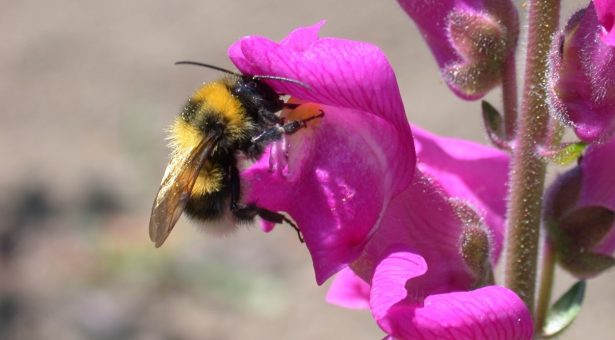Snapdragon enters the genomic age

Researchers have successfully assembled a near-complete genome sequence of the popular plant model system Antirrhinum majus.
The assembly, comprising 510 megabases of genomic sequence and containing nearly 38,000 annotated protein-encoding genes, is the result of a successful collaboration between scientists in China and at the John Innes Centre.
The genome sequencing, assembly and annotation of Antirrhinum majus, a flowering plant commonly known as snapdragon, promises to deliver important insights into plant genetics and evolutionary processes.
Antirrhinum which belongs to the family Plantaginaceae has for the past three decades served as a model system facilitating investigations into molecular and developmental genetics.
Using Antirrhinum as a model system, scientists have increased knowledge of plant shape, gene function and important genetic elements such as transposons – also known as jumping genes.
However, these studies have been carried out without the benefit of a genome sequence which would provide an overall evolutionary and architectural context.
“The assembled Antirrhinum majus sequence provides a reference genome for the Plantaginaceae and will be helpful for genetic, genomic and evolutionary studies in both Antirrhinum and other flowering plants,” explains Professor Enrico Coen from the John Innes Centre. “This work brings the model system of Antirrhinum into the genomic age and we hope the resource will be a useful stimulus to further studies.”
In a project led by Professor Yongbiao Xue of the Chinese Academy of Sciences, the genome was generated by combining a technique called whole-genome shotgun (WGS) sequencing with two other technologies which allowed different degrees of analysis.
It has already delivered valuable insights into important evolutionary processes and traits that have been studied by generations of biologists. Comparative analysis based on the sequence reveals that:
- The Plantaginaceae and Solanaceae (nightshades) families diverged from their most recent ancestor about 62m years ago
- A whole-genome duplication event occurred in the Plantaginaceae 46-49m years ago
Analysis has also uncovered genetic structures associated with much-studied complex traits such as flower asymmetry and self-incompatibility.
The findings are in the paper: ‘Genome structure and evolution of Antirrhinum majus L’, appears in the journal Nature Plants.



